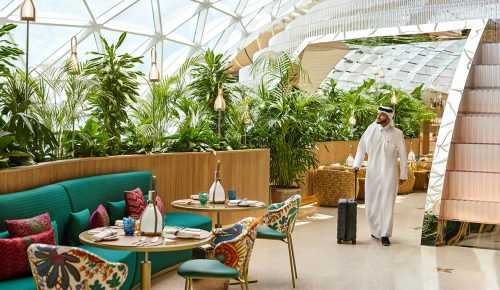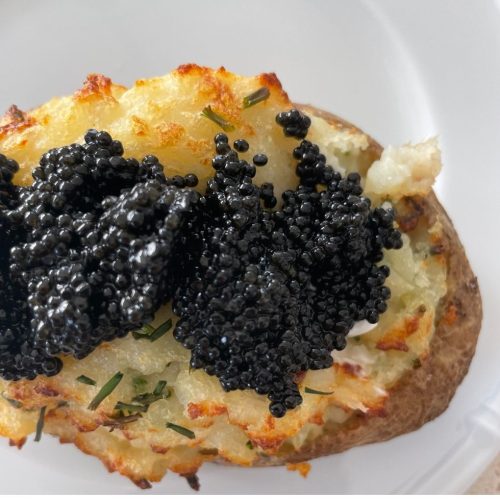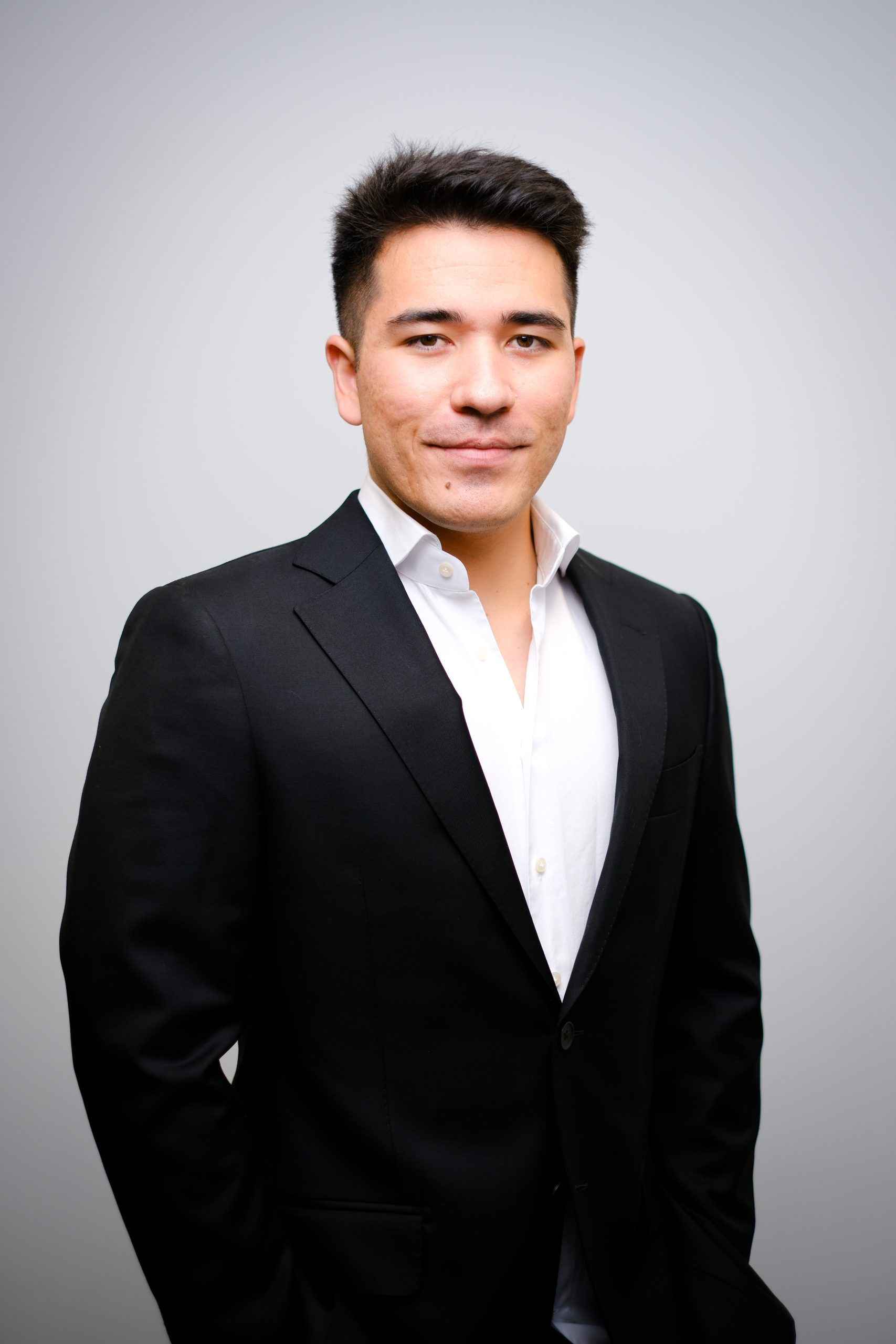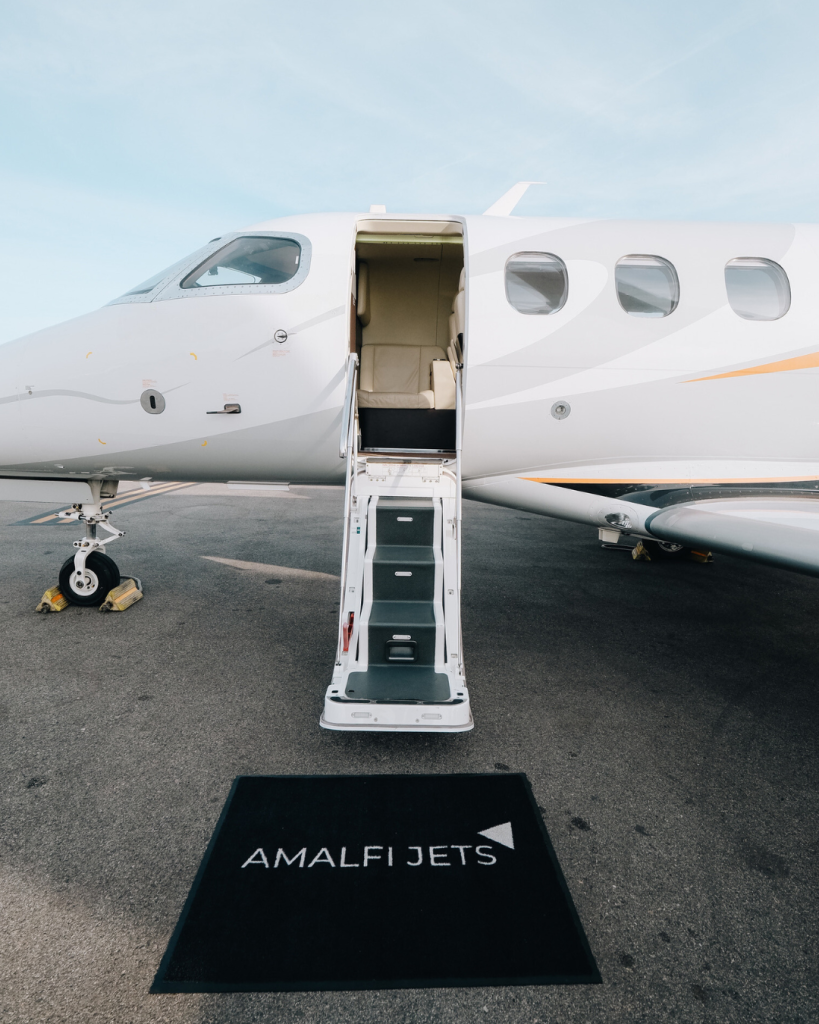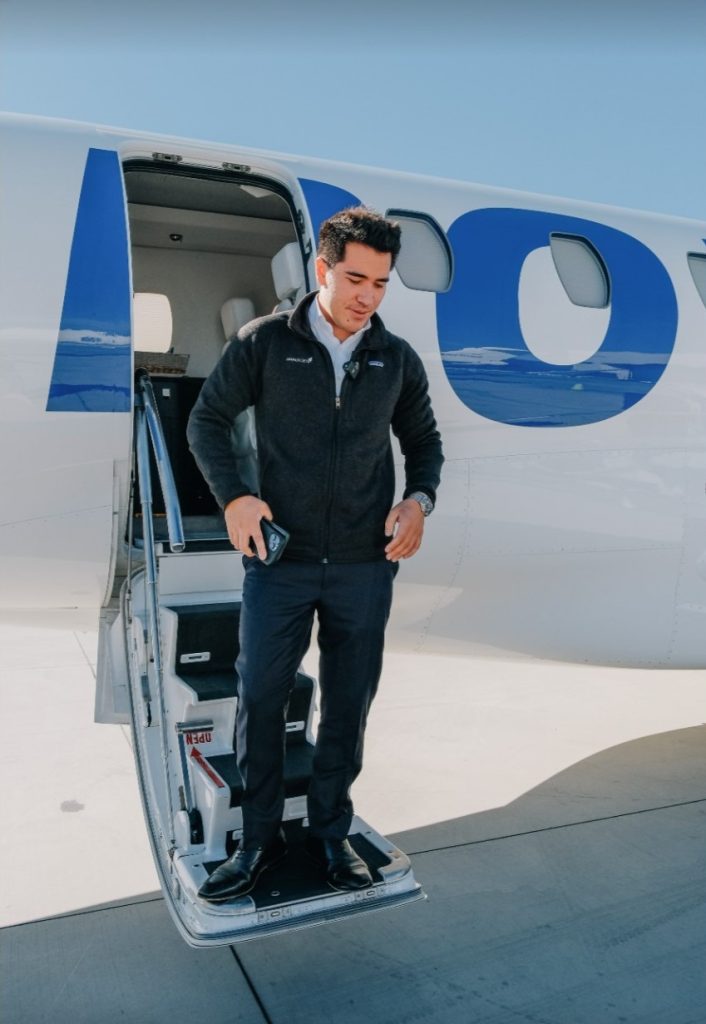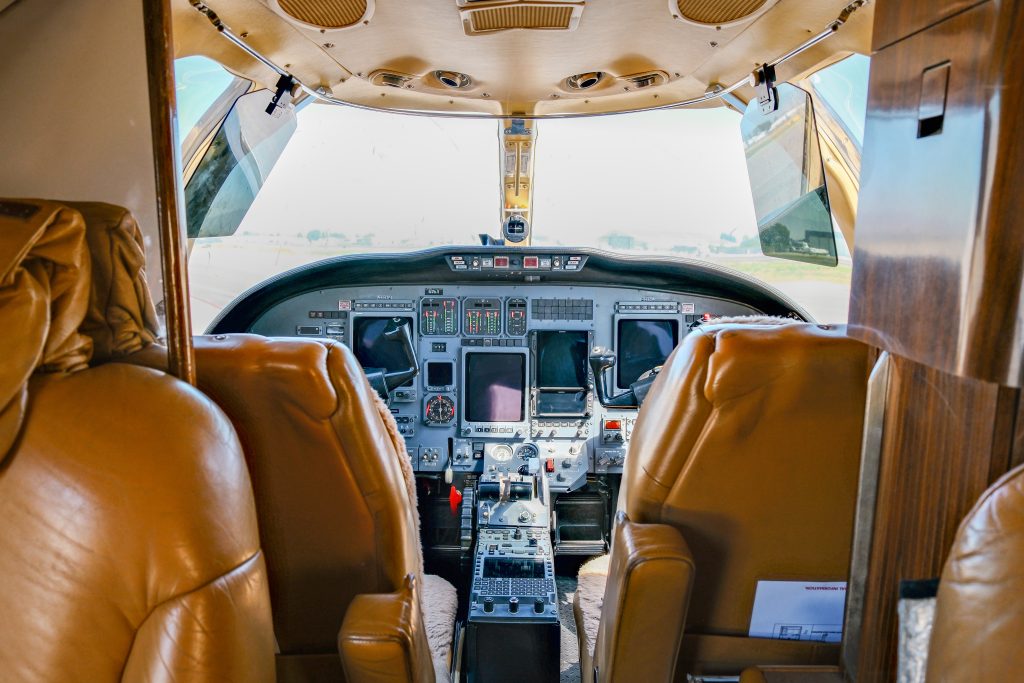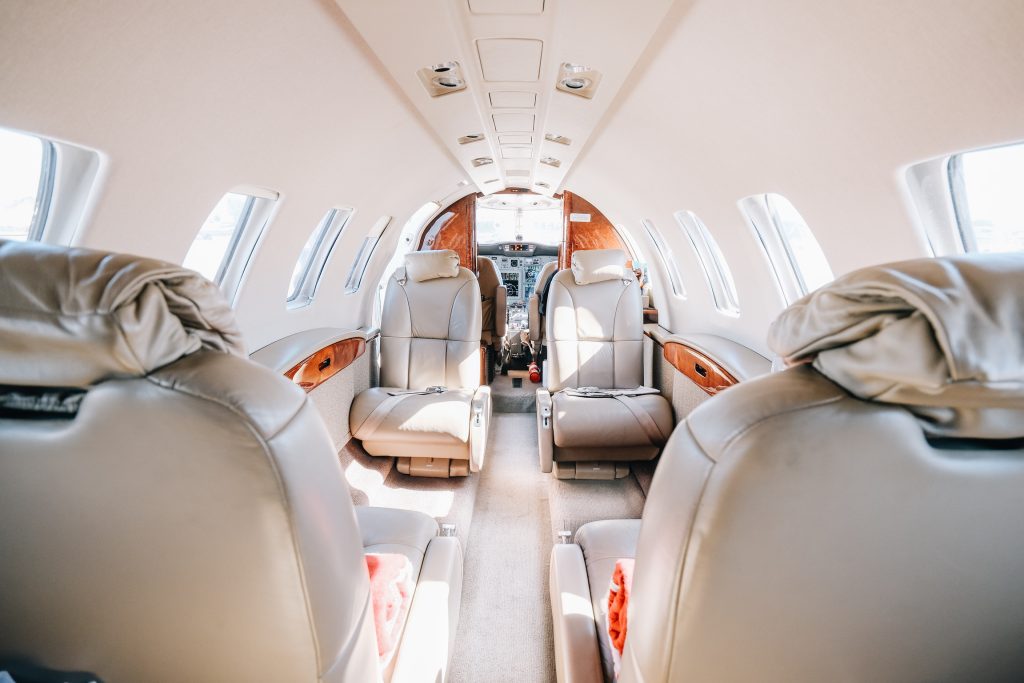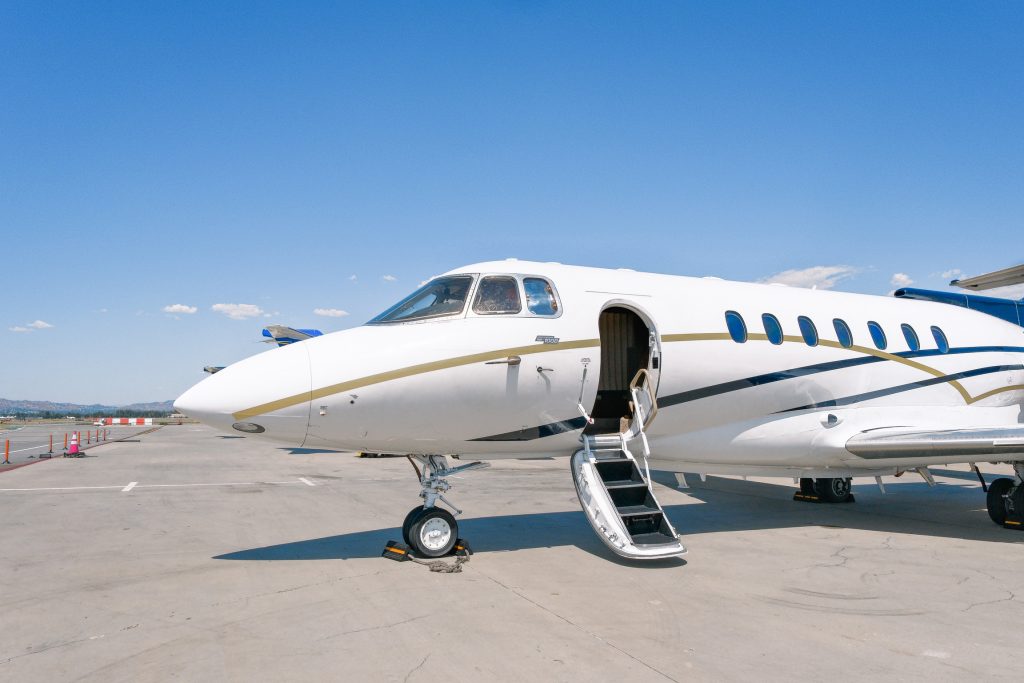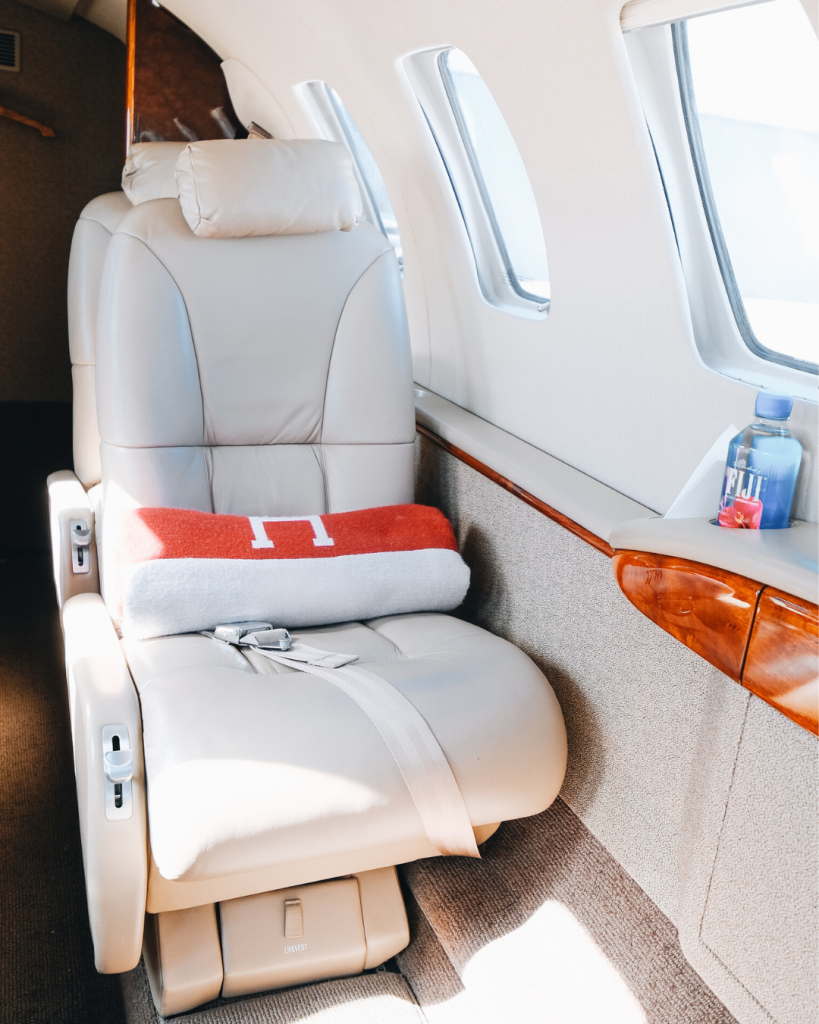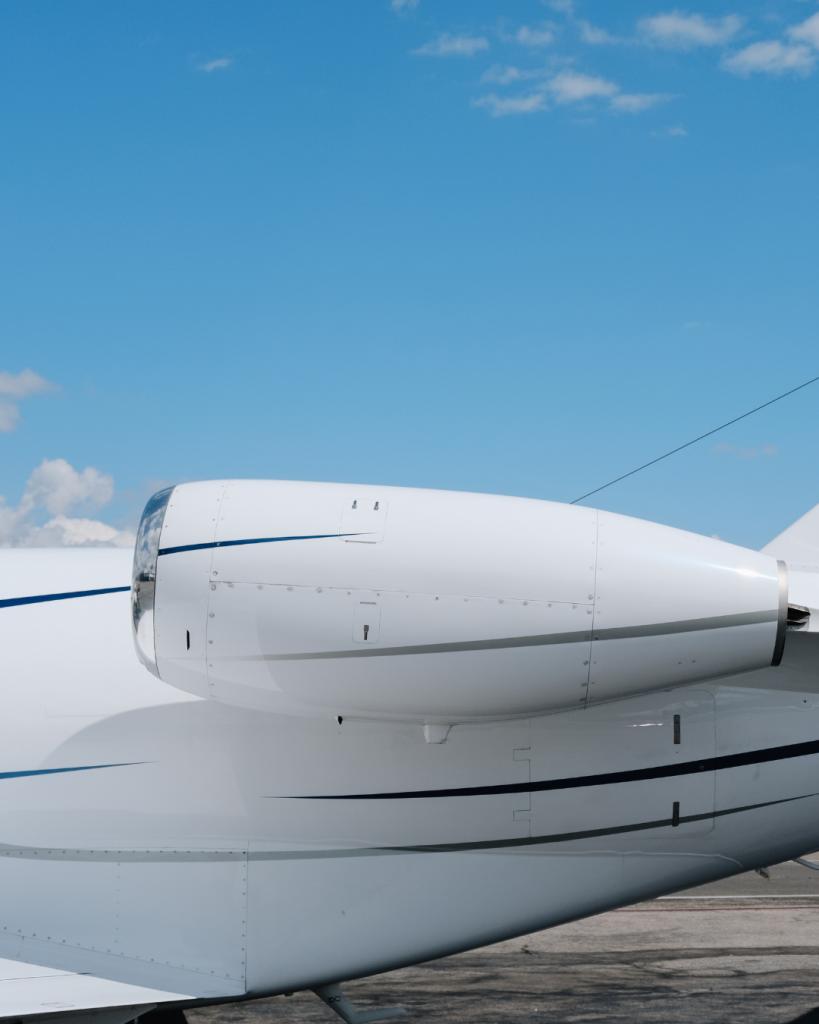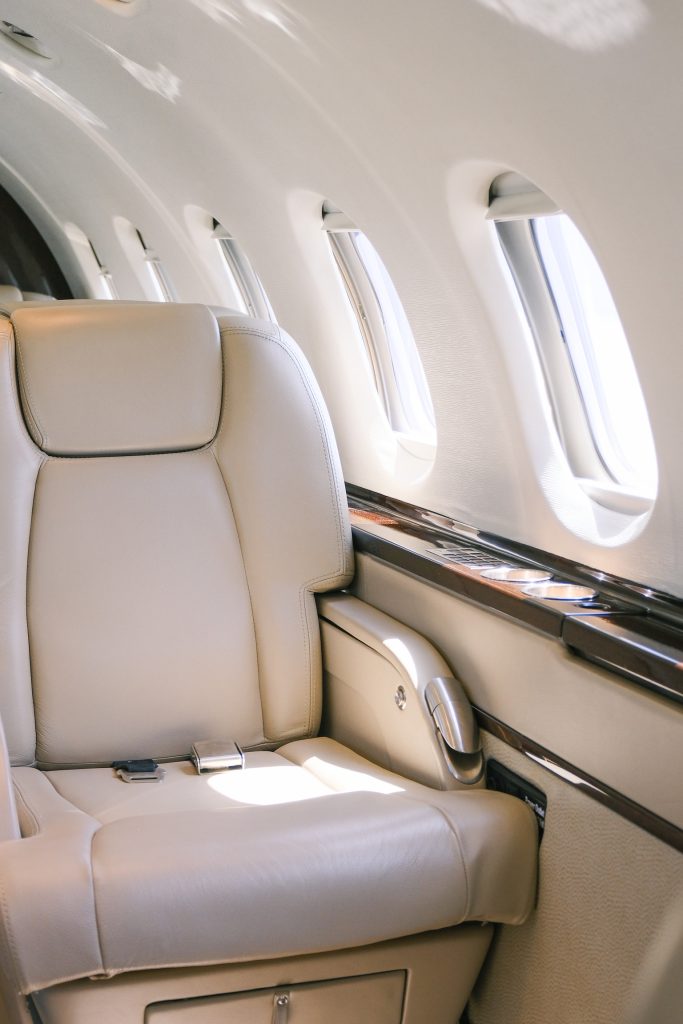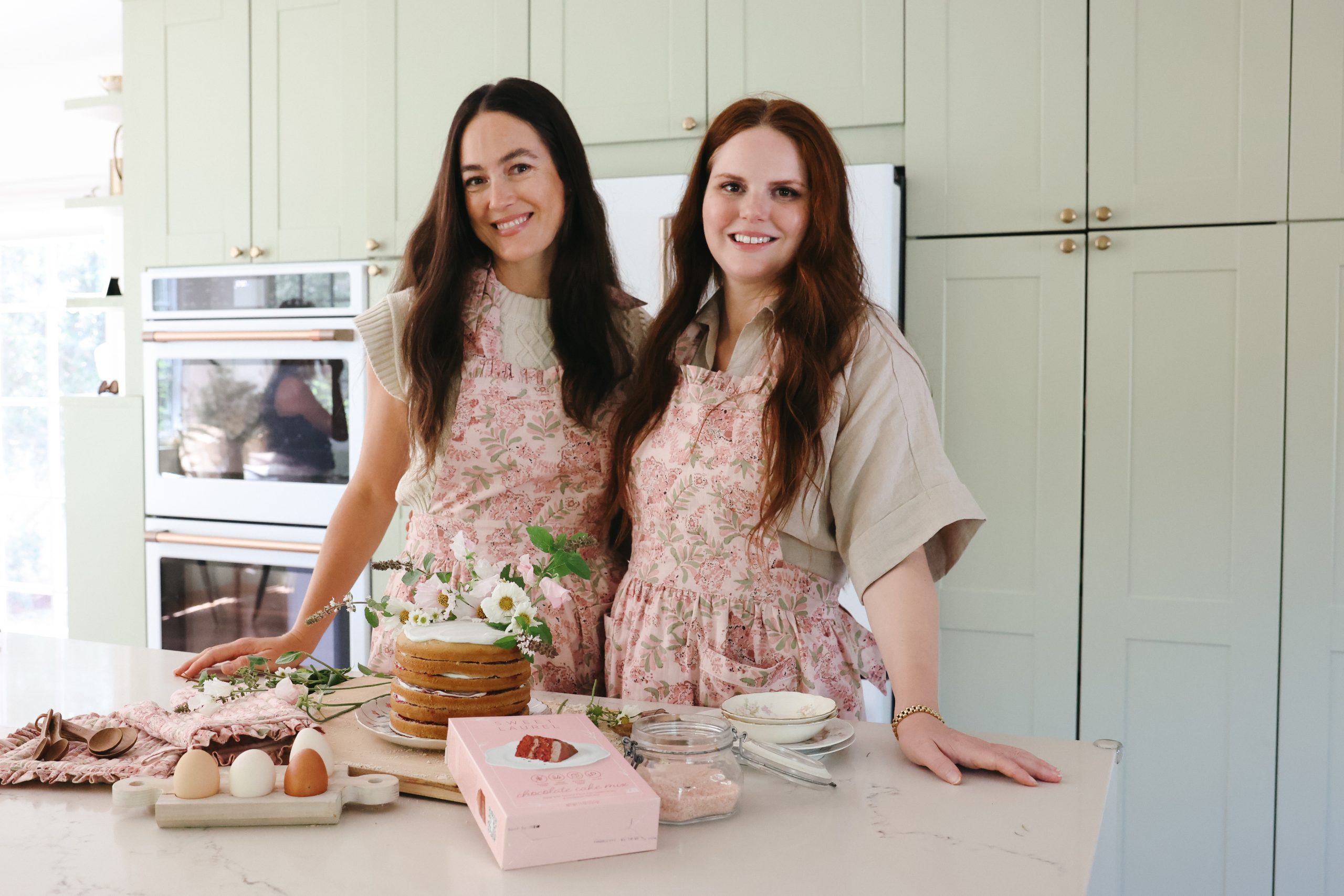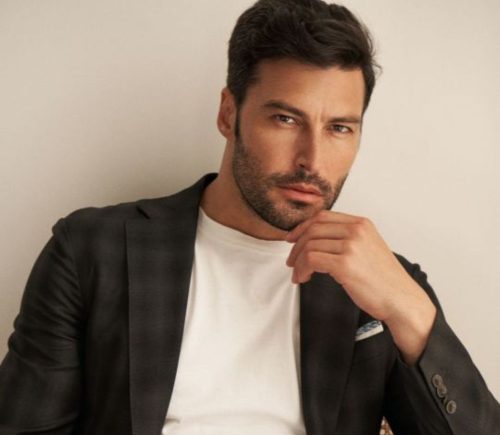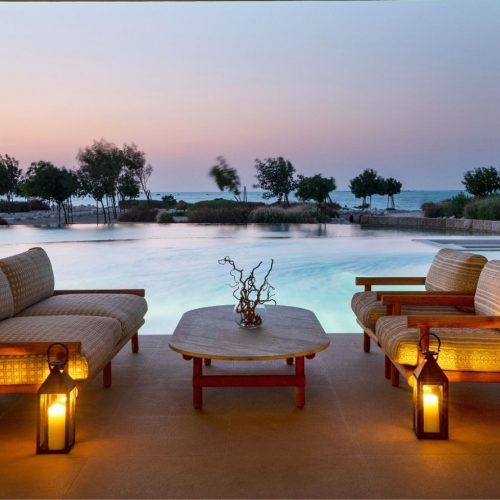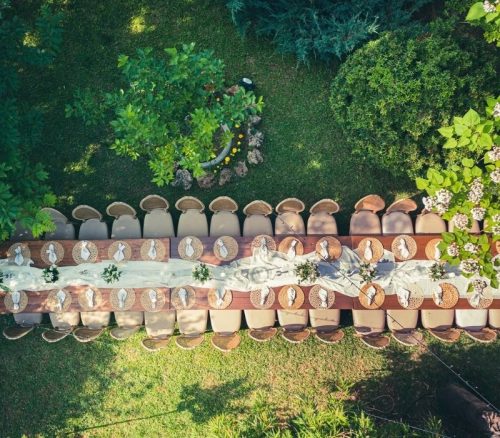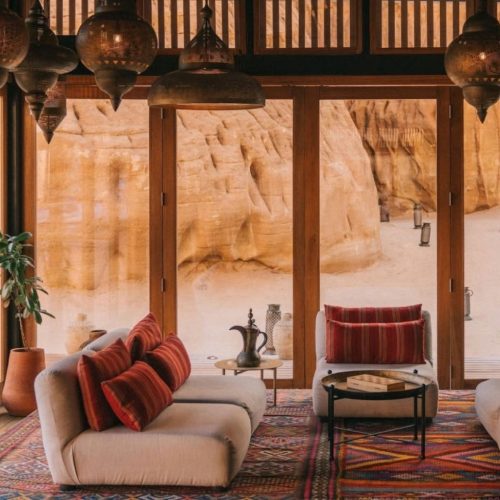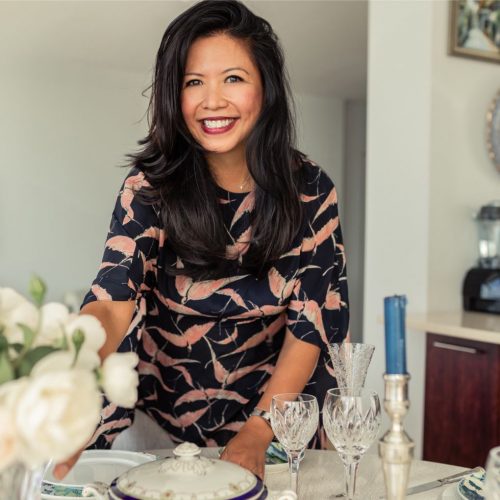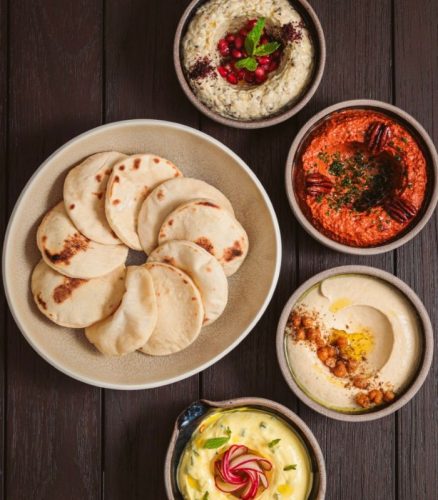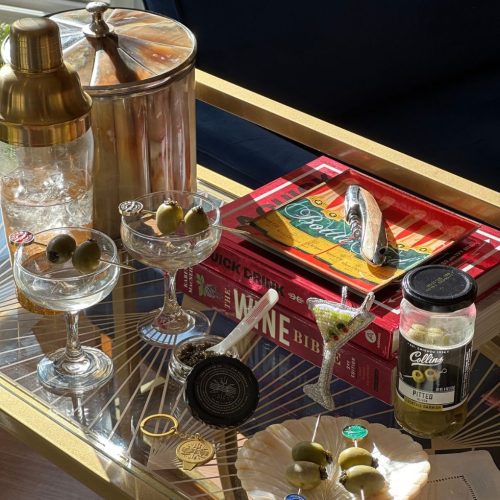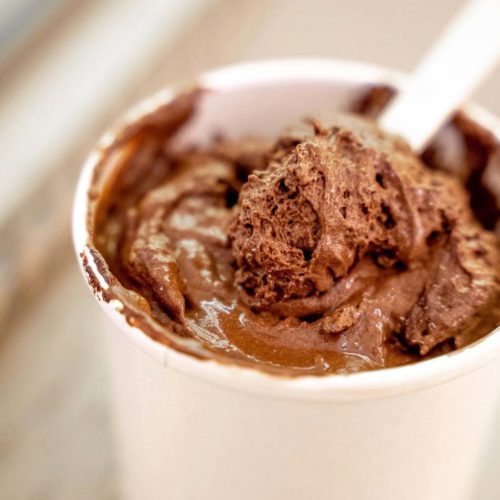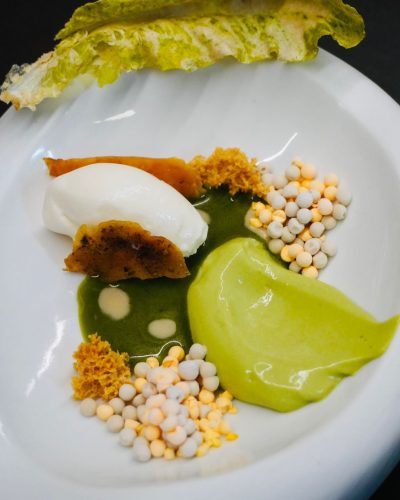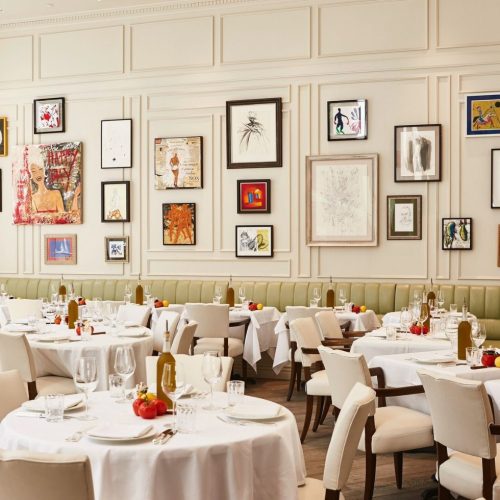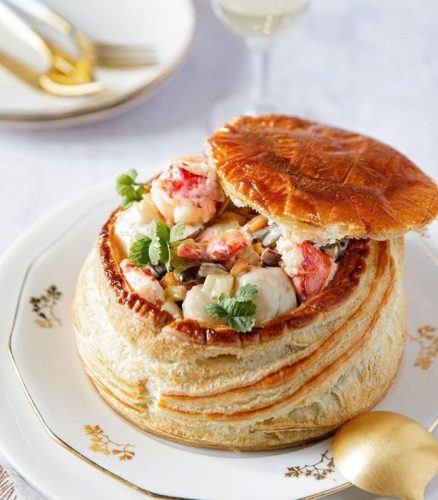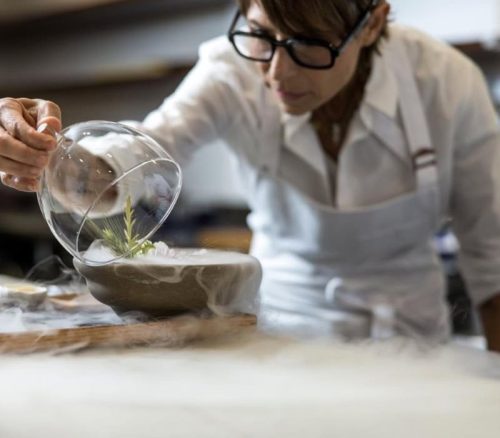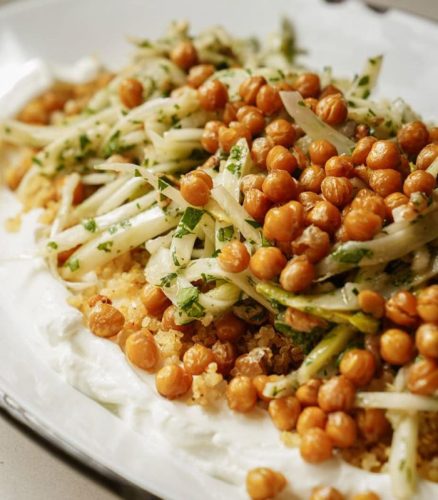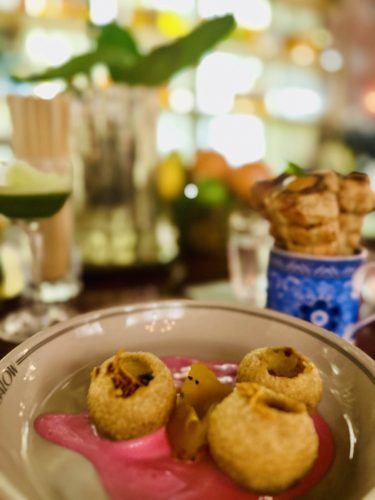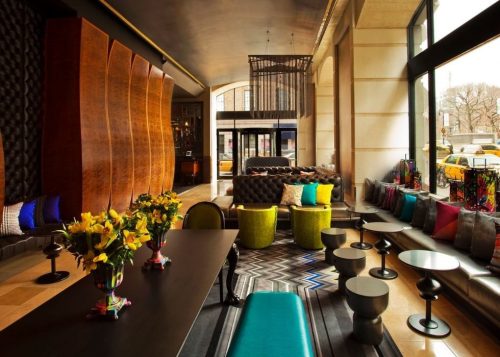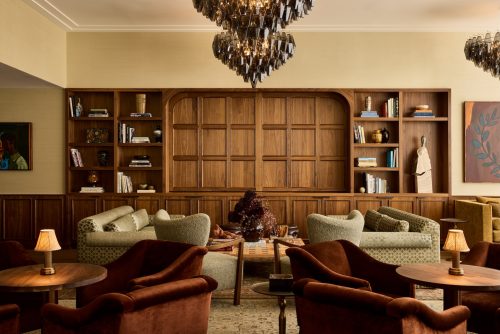Think of the Amalfi Jets social media content as Cribs, but for private planes. That’s what Kolin Jones, Founder and CEO of Amalfi Jets has done on Instagram and TikTok, giving us a chance to see how the .000001% travels around the world.
Of course, Amalfi’s 2.6 million TikTok followers must understand that there is more to Amalfi Jets than social media — that’s their fun little side gig. Behind all that, there is a hard-working team of 15 Amalfi Jets employees, who charter private planes around the world, 24/7. And in the world of luxury travel and aviation, few names have risen as quickly and prominently as Kolin Jones and Amalfi Jets. It’s easy to forget that Kolin is only 24 years old.
We sat down with Kolin to talk about Amalfi Jets, his career as a pilot, The Amalfi Foundation, and — of course, travel.
(Special note for fans: Yes, he conducted the interview from that very desk from the reels.)
Galavante: What is Amalfi Jets?
Kolin Jones: Amalfi Jets is a private jet charter brokerage. We don’t own or operate any aircrafts, but have our own network of approximately 3,500 aircrafts that we source and move for our clients’ trips. We help arrange the flights.
In the private jet charter world, there’s about 27,000 airplanes across the world that are available for charter. And of those, only about 3,500 of them actually meet our safety standards. Clients can reach out to us from anywhere, and say, “I need a jet tomorrow, from LA to New York.” We then look at all of the airplanes that are available for charter in that part of the world, and find our client the best one. Our headquarters are here in Los Angeles, and we have flights pretty much every single day, anywhere that our clients need.
Why did you start Amalfi Jets?
My whole life, I was in love with aviation. I got my pilot’s license when I was 18, here at Van Nuys Airport in California. I started flying when I was about 12 or 13, and I always wanted to go be an airline pilot. That was my biggest goal. (When you’re getting your pilot’s license, there’s actually no minimum age for taking flying lessons).
I got my license… and then COVID happened. Nobody was hiring pilots. During COVID, everybody was flying private — there was a lot of demand from people who could afford it. So, it was a great time to be in the [private] industry.
But the biggest reason for Amalfi Jets starting — and it sounds so cheesy — but, I blame our competitors. In this industry, so many of the companies that have our exact business model are not pilots. They didn’t go to a good aviation school. Their understanding of airplanes is a big problem. When hiring a pilot, there’s a certain amount of flight hours and training that the pilot needs to have. But for a company like ours, selling charters and coordinating flights – there is no regulation. In my opinion, there should be. I’m a pilot, and everyone here at our company is well-trained on aviation. A lot of our competitors aren’t. I saw this as a big safety risk.
Some of these [competitor] companies that I reached out to before I started Amalfi, were saying things that were just wrong. If I take this airplane model on my desk here [excitedly holds up an airplane model from his desk] — this is a Global 6000. This airplane costs about 25 million, used. It seats about 12 to 14 people, depending on how it’s configured. I had one of these companies tell me that this airplane can fly non-stop, anywhere in the world – which, is false. It can’t do that. They said that it can fly up to 18 people – which, it also can’t do. So, that’s a problem. And that was the biggest need for us — Amalfi Jets.
And in addition to safety, I think every company should have a mission greater than themselves. Ours is to bring back the love of aviation and what I always thought flying private was about. I thought it was this big, red-carpet experience. Fancy, personalized. For our competitors, it’s not. If I’m going to drop a hundred grand on a private jet, I’m going to want a Ritz-Carlton-level luxurious experience. And that’s something that we strive for.
Can you tell us how you started the company with Calvin Yoon?
Yeah, Calvin and I both grew up here. We went to high school together here in California. We were best friends. Initially, I started Amalfi Jets just out of my dorm. First, it was called Jones Jets International. And we didn’t do anything. I started it by myself, it was a terrible name, and I came back home (since this was during COVID). At home, I was chatting with Calvin, and said, “Hey, listen, we should do Jones Jets. We should just go all in on it.” And we did.
Why “Amalfi” Jets?
Well, we both agreed that Jones Jets was just the worst name ever. So, we changed it to “Amalfi Jets.” I do love the Amalfi Coast. And my grandma’s Italian. But that said, Calvin grew up on Amalfi Drive in the Pacific Palisades. It’s a big secret. Also, Amalfi just sounds nice. It’s a very beautiful place, very elegant.
How is Amalfi Jets doing now?
Since we started five years ago, our company has grown considerably. Last year, we did four times as much revenue as we did the year before. This year, we’re on track to ten times what we did last year. I attribute a lot of that to the recurring clients that we have. Flying private is a different business model from, for instance, watches. There, you only buy one or two, and that’s it. If you fly private, you fly private. Some of our clients fly private three or four times a month. Some fly private every single day — some once a quarter. But either way, there’s a lot of recurring business.
And of course, the social media?
Yeah, the social media’s been fun. We started posting about a year ago. It really started taking off during the past six months. It’s great to personify the brand. At the end of the day, people buy from people, right? So, we just show what it’s like. A lot of people don’t really know much about the private aviation industry. And not to be rude, but a lot of the companies in this industry are dinosaurs. Some of these companies have been around for 40, 50 years – and there’s not a lot of innovation in this space. Definitely not a lot of social media. So, while some people in our industry aren’t big fans of our TikToks, they’ve been a lot of fun to make.
We’re on TikTok, Instagram, Facebook, YouTube, Twitter, Snapchat, Threads — we’re on everything. We have four accounts: Amalfi Jets, my personal account, the Amalfi Reserve account (which is our new membership on the app). And then, we have the Billionaire Hour podcast that [we just launched]. We’re doing 10 episodes with highly successful people. The first [is] with the co-founder of Equinox – one of my favorite gyms.
Was it travel in general that got you into flying, or love for aviation specifically?
It’s both. When I was a kid, I was very lucky that my parents loved to travel. So, as a kid, we used to take a yearly family vacation, and we’d go to Europe or Asia. I think now I’ve been to 48, maybe 49 countries. That brings a lot of culture. Seeing the world, I thought, “Wow, there is so much out there.” It’s so interesting to see the different cultures, different cuisines, different places. And I still love to travel.
Obviously, now we have an office, and I work at this desk – so, now I get to travel through our clients. I still travel myself at least once or twice a year, though.
Do you have a favorite destination?
My absolute favorite place is St. Barts. St. Barts is just the best — I cannot describe it.
I’m a big Europe guy, and St. Barts is my favorite, because it blends Europe. Everyone there speaks French. I took French in high school, so it’s a great opportunity to practice your French. Coming from L.A., you have that L.A. appeal. You have their version of Rhodes in Gustavia. There are yachts everywhere. There’s an airport that has a really famous landing. So, they have the aviation, they have the luxury (the European and the French), and it’s just a gorgeous tropical island. I think about St. Barts every single day, because it’s so perfect.
Do you have a favorite hotel?
My favorite hotel is Le Toiny. It’s a hotel in St. Barts. We work with them. Anytime our clients come to St. Barts, I always recommend it. And I always say that when I die and go to heaven, heaven better look like Le Toiny, because it’s the most perfect place on the planet.
Is your phone always turned on?
For some of the customers that I deal with (like McKenna), my phone is always on. Otherwise, no — we have a great team.
But it’s true that in order to have good service, you have to be available. I was never a big sports person, but I’m extremely competitive with business. I want to know everything about every single one of our competitors, exactly as it’s happening. And I’m very big about our customer service. So, our average response time to customers is 4 minutes and 32 seconds, as of last week. And everyone is [celebrating], and I’m thinking — no, we could do it within a minute.
What exactly does having good customer service mean to you?
Every company that we compete with has the same annoying tagline — great customer service. Everyone says that. I will give one of our examples. It’s one of my favorite situations.
One of our customers left their bag on an airplane. The airplane flew to Madrid, and the bag got removed from the airplane. For some reason, the FBO couldn’t ship the bag (I don’t know, policy?). This was a really big customer. And all of our multi-departure representatives that are based in Florida were unavailable. So, I said to Calvin: “I think you need to fly to Madrid, just to ship this bag.” And he did. That is the level of customer service that we have.
What are your clients like?
I love this industry — we have amazing customers. And we also have some customers that are a little crazy. But I just love the ridiculous factor of the private aviation industry. We have people who are transferring jets from LA to San Diego (which in flight time is about a 14- minute flight) for Botox appointments. People judge them on the internet, but they can afford it, and we’re going to deliver.
Today we’re doing a college tour for this family that’s flying around all the Ivy Leagues. They went to one, and said, “We think we’re going to stay here for a couple days.” And even though the plane is already scheduled, they said, “That’s fine, just cancel – we’ll book another one.”
The people we get to work with are great. Some are fun, some are just eccentric. And I’m not judging. I love that there’s something different every day.
Who primarily are your clients?
Our social media is all real-world, crazy, silly situations. But that’s about 5% of our business. The other 95% of our business is super normal — but it’s not really fun for TikTok, to have these really simple transactions.
[As far as who they are], our business is roughly a 60-40 split. 60 is ultra-high net worth individuals, typical founders, CEOs, principals. We have [clients of] generational wealth. We have [clients of] new money, we have [clients of] crypto money, and we have a lot in between. And on the business side, we work with a lot of well-established public companies that already have a flight department. But, it’s very easy to track an airplane now. So, a lot of these companies will reach out to us, because when you charter with us, you buy that that invisibility.
What is your favorite, most ridiculous customer request?
We’ve had a lot of… ridiculous. One time, we had a client flying out of Cabo, who wanted Chick-fil-A. (Chick-fil-A is one of the most ordered things on board private jets). But private jet catering is controlled by, like, three companies. And they’re producing it, driving it to the airport, dropping off – there’s a lot of labor involved. So, it’s very expensive. If you order three salads in a restaurant, maybe you’ll pay $150. But that’s a $700 catering, because of delivery fees, the drop-off, [etc.]. We tell our clients, “You can order private jet catering, we have a full menu, it’s like 38 pages. But, it’s much easier to just Doordash Chick-fil-A, or have one of our reps go pick it up and boom – there’s Chick-fil-A on board.” Cheap and easy.
But this client was in Cabo, and requested Chick-fil-A. There’s no Chick-fil-A in Cabo. So, I thought — what would our competitors do? (I always make that joke). They would probably just say that there’s no Chick-fil-A in Cabo. We’re not saying that. So — what time is this flight? It’s at 2 o’clock. What’s the earliest flight from LA to Cabo? It’s at 8 a.m. Great – I want someone to fly to Cabo.
And they did. They flew to Cabo, and brought them the Chick-fil-A there. But they didn’t get a drink.
Can we talk about the Amalfi Foundation?
The Amalfi Foundation is something that Calvin and I started maybe two years ago. As a kid, I was an Eagle Scout, so my biggest [avenue] of giving back was through different kinds of community drives and things like that. And we got involved in philanthropy in 2021, when the Leukemia and Lymphoma Society reached out to us, and in 12 months, we raised the LLS over $160,000.
That’s when I thought — there’s a real platform that I underestimate. So, we looked into starting a charity. Our goal was to address the homelessness crisis.
We volunteered at a couple of churches, and about five different homeless shelters. When I was in the homeless shelter in Thousand Oaks every day, I noticed that the same people would show up every time. I was speaking with the staff there, and I said, “These people [who are] here every single day — how are we really helping them?” And they explained that there’s no government assistance that’s really going to help them. They just need a hot meal. So, forgive me for sounding blunt, but [I understood] that we weren’t really solving a problem. We were just providing a hot meal.
So, we launched our Local Community Development Initiative (LCDI). And with that, we work with people who are unhoused or low-income, and fund six months. We pay for everything – living expenses, rent, housing – but with the caveat that they work with us every week. We give them a resume, we give them a job, teach them how to budget, and teach a man to fish.
Can you tell us a specific success story?
Our first candidate for the LCDI was this guy named Michael. He was referred to us by the church by our office. He was 30 years old, and he was living in his car, at the library. When we met him, he said “I don’t want to be a burden to society. I want to get out of this.”
So, we got him housing for six months. We built him a resume. We got him a bunch of IT certifications, CompTIA, A+, stuff like that. And he actually got a job at Geek Squad.
So, we launched that program. We’ve helped about 10 to 15 candidates. Also, we partnered up with other organizations and done big career fairs, and help people make resumes. We did this with a foster youth organization, with the church, and with another homeless shelter.
Are there any other charity initiatives you are involved in?
We also launched a Student Leadership Accelerator program (SLA), and worked with a bunch of different high schools in the area. We operated four or five SLA programs. The approach is that high school students build a team, they create a mission, and essentially tie themselves to the LCDI program. They volunteer at the homeless shelter, they learn about it, and they rally a team to raise money for our mission.
We raised over half a million dollars with that program, and to date, we’ve had about 100 SLA high school students that have been involved. [They] learn the leadership skills of working with different business leaders, raising money, and being connected with different CEOs. Once these high school students are in college and they’re looking for an internship — boom, now they have this great big network of people that they’ve built up throughout that process.
Having said that, I’m the CEO of a private aviation company. I’m in no position to be leading some sort of homelessness charge. But, with the money that we raise and the money that we contribute, we can take a real effect.
We have a platform, and we have a responsibility to other people to help. And it’s really, really important.
Other Interviews You’ll Like
Chef Eyal Shani’s Favorite Restaurants and Cities

